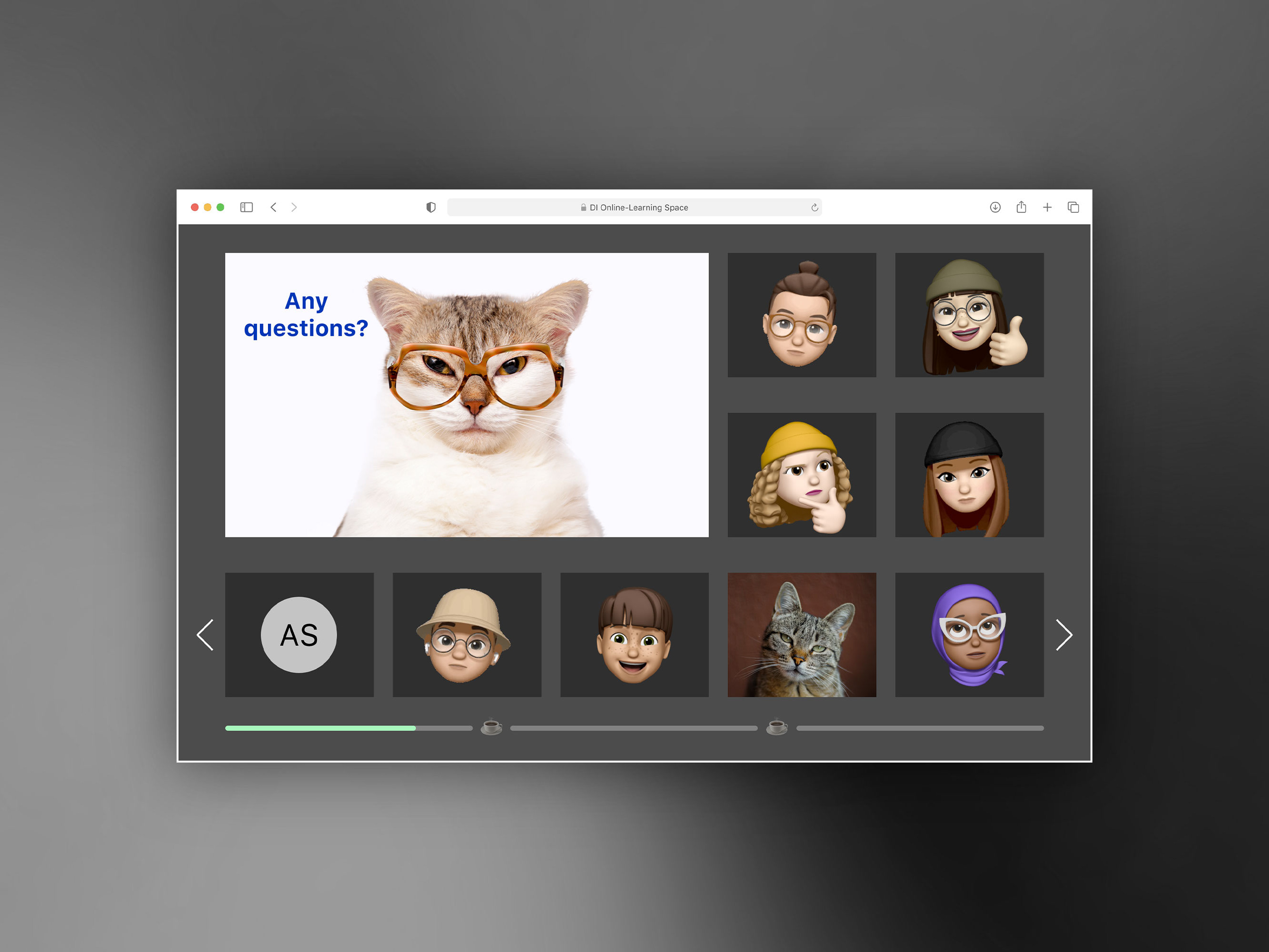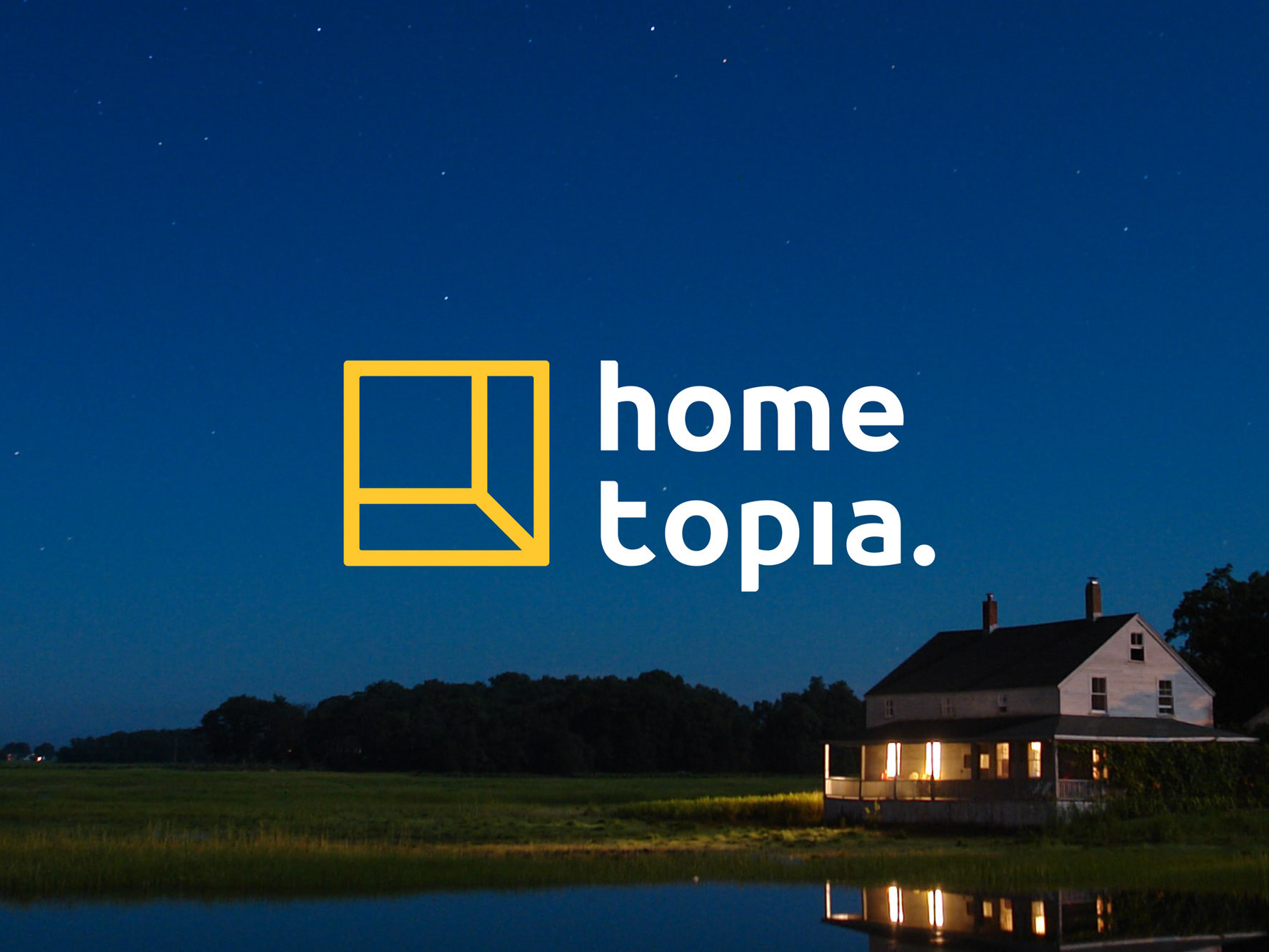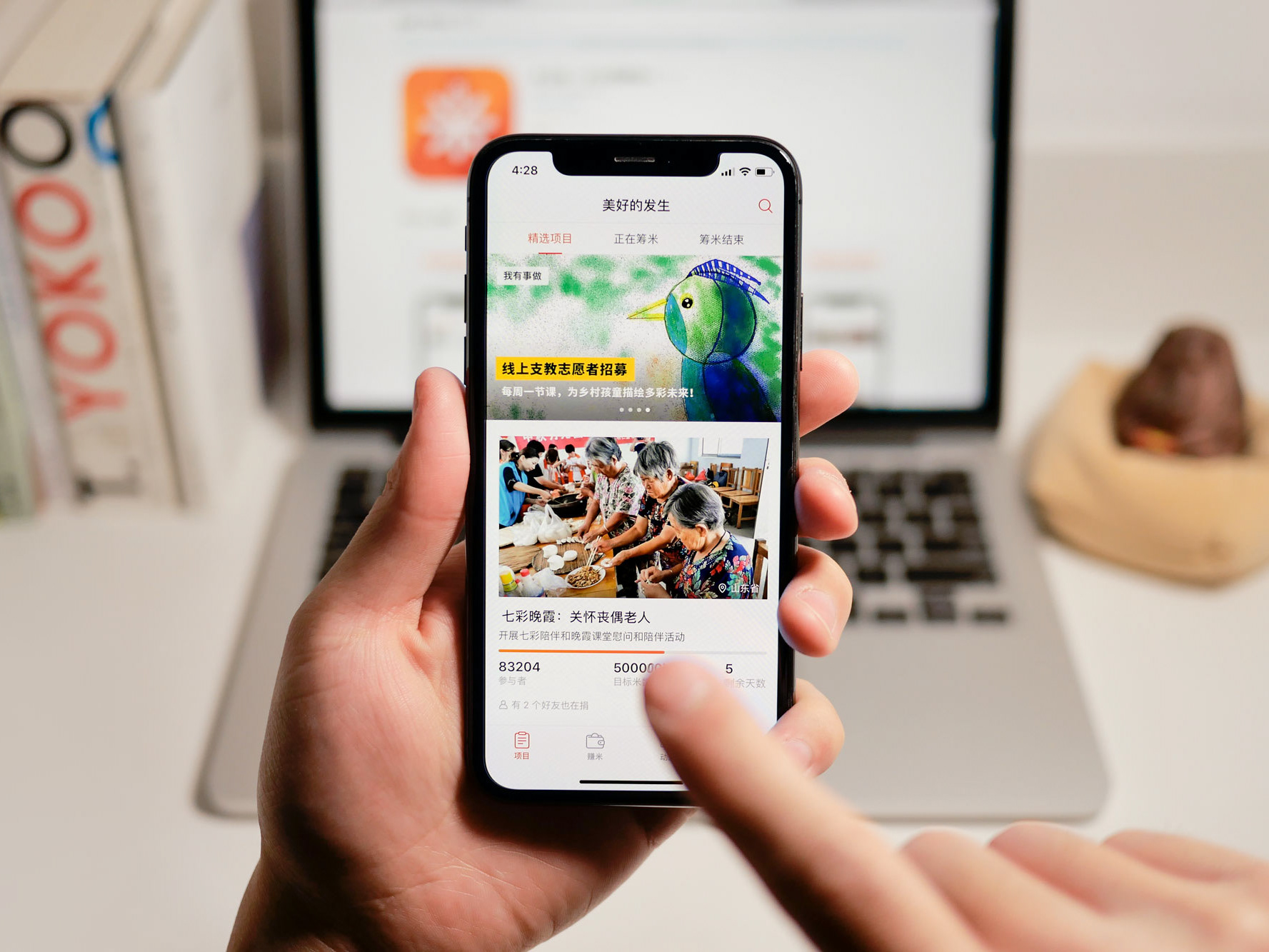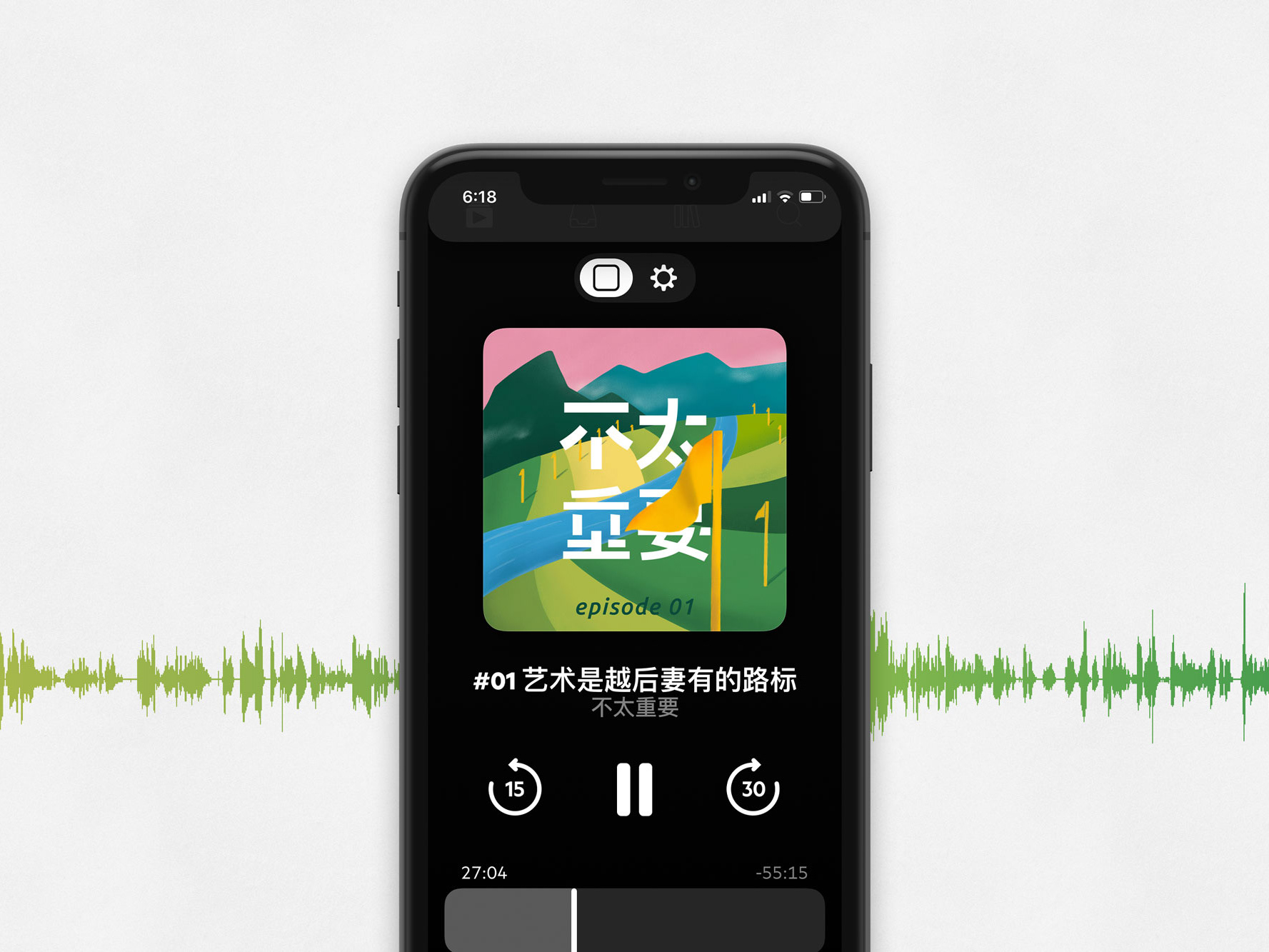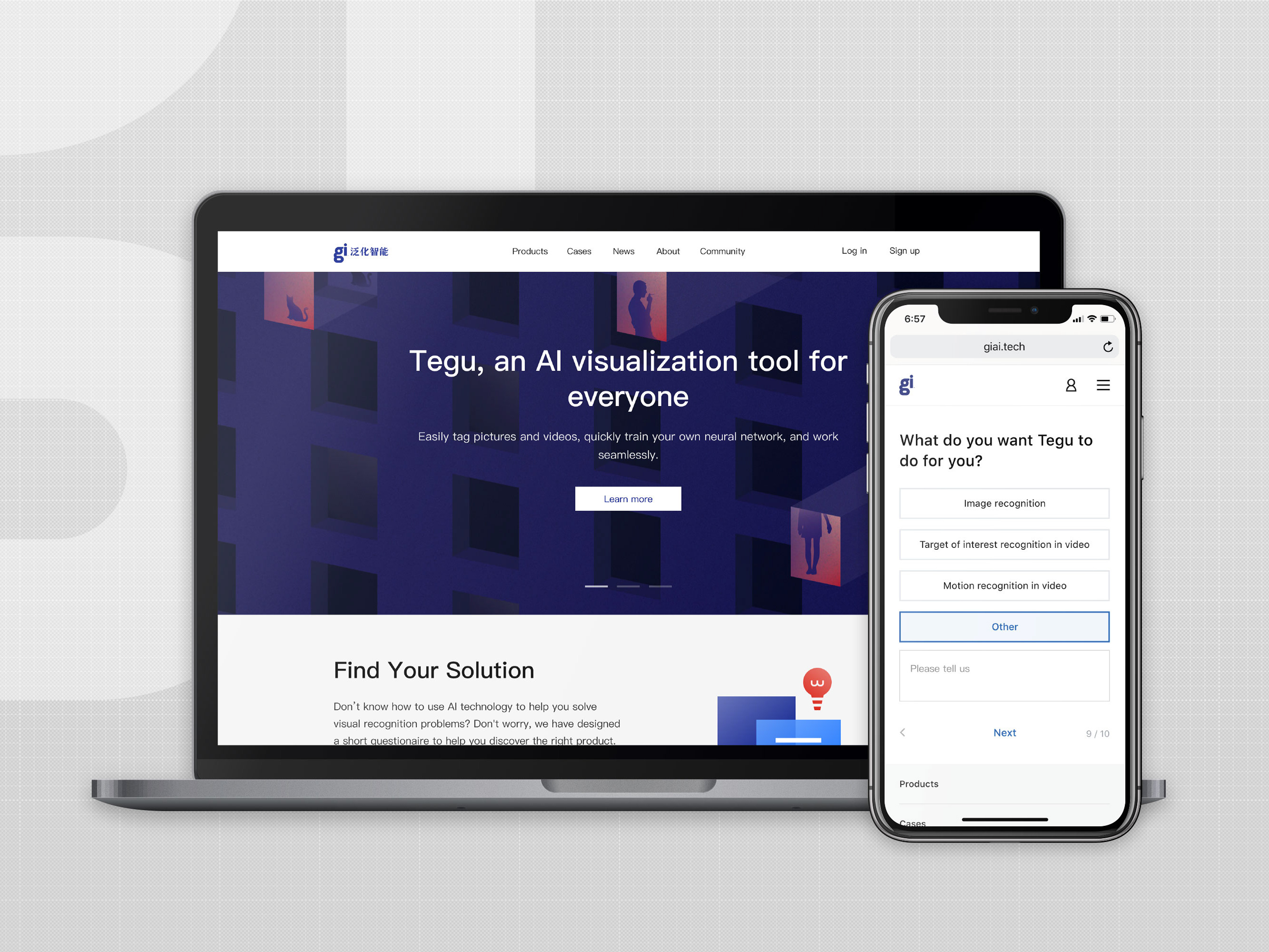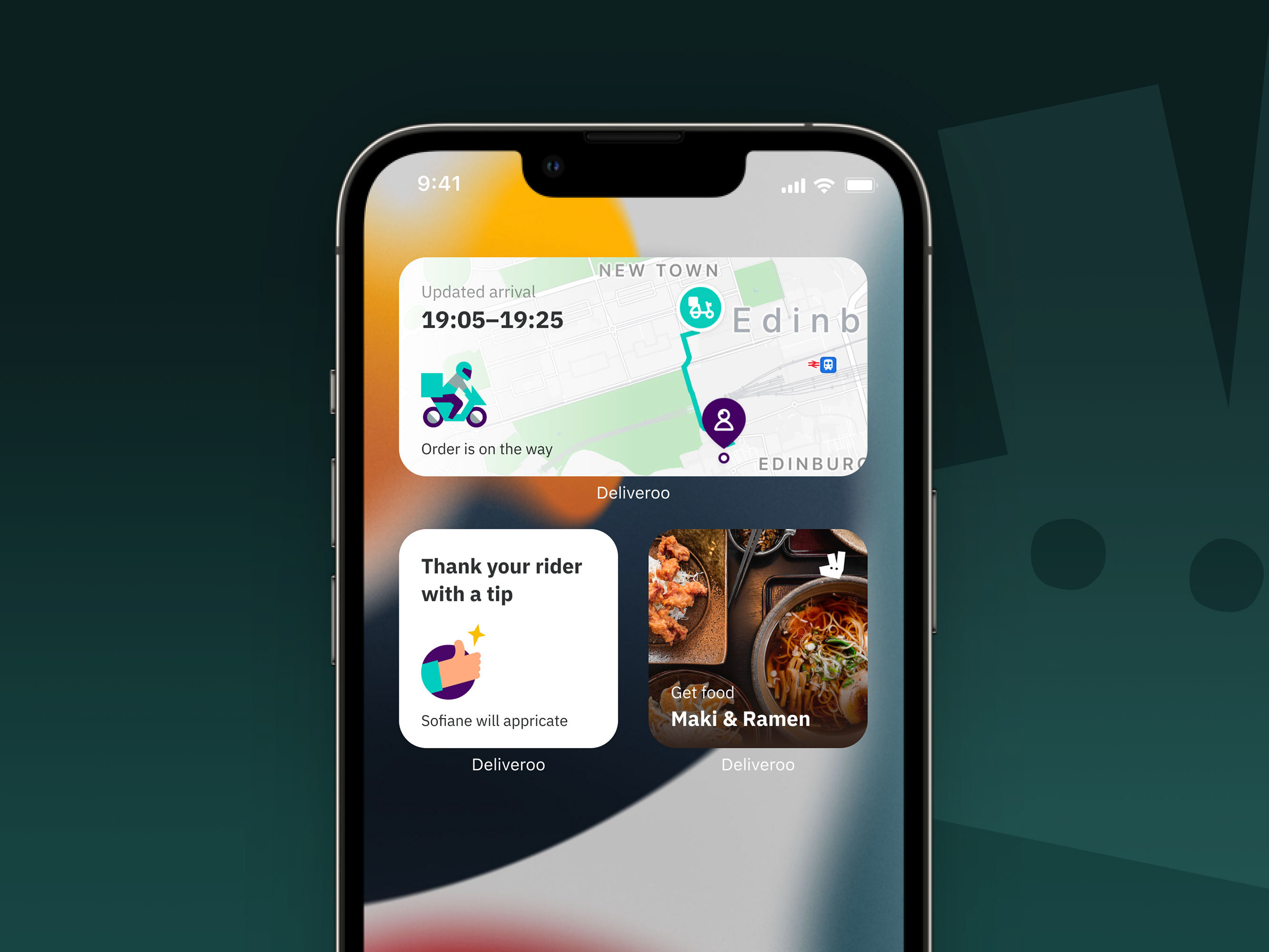While advertising is currently the most dominant way of monetisation:
3. Independent podcasters are also freelancers, most of whom do not have sufficient commercial experience and skills and have weak bargaining power.
4. Advertising does not provide a stable income and can compromise creative freedom.
Data source: MediaRadar
Also, to explore the possibilities of the relationship between hosts and listeners and how this relationship will affect listeners’ willingness to pay.
This has advantages in terms of advertising and marketing. The listeners have loyalty to the host, and the hosts are highly persuasive to the listener.
But it can also develop into a burden for the hosts. Listeners know a lot about the hosts and consider them their friends, so they will demand more responses and even intrude on the hosts’ lives. This is an issue worth considering when making designs.
A collective art project on ‘Break Kickstarter’.
Chinese parents receive WeChat Red Envelopes from their son. Resource: China Daily
Monzo integrates IFTTT to provide a new service.
Visual interface vs. voice interface for interacting with podcasts. Source: Understanding user interactions with podcast recommendations delivered via voice
Fireside, live audio and instant feedback.
2. What are the possibilities for listener-host relationships?
3. What kinds of interactions could reflect or enhance the listener-host relationship? Can enhancing this relationship influence their willingness to pay?
The overall ideation & design process. Each stage and the corresponding method.
Generation – ‘How might we ...?’
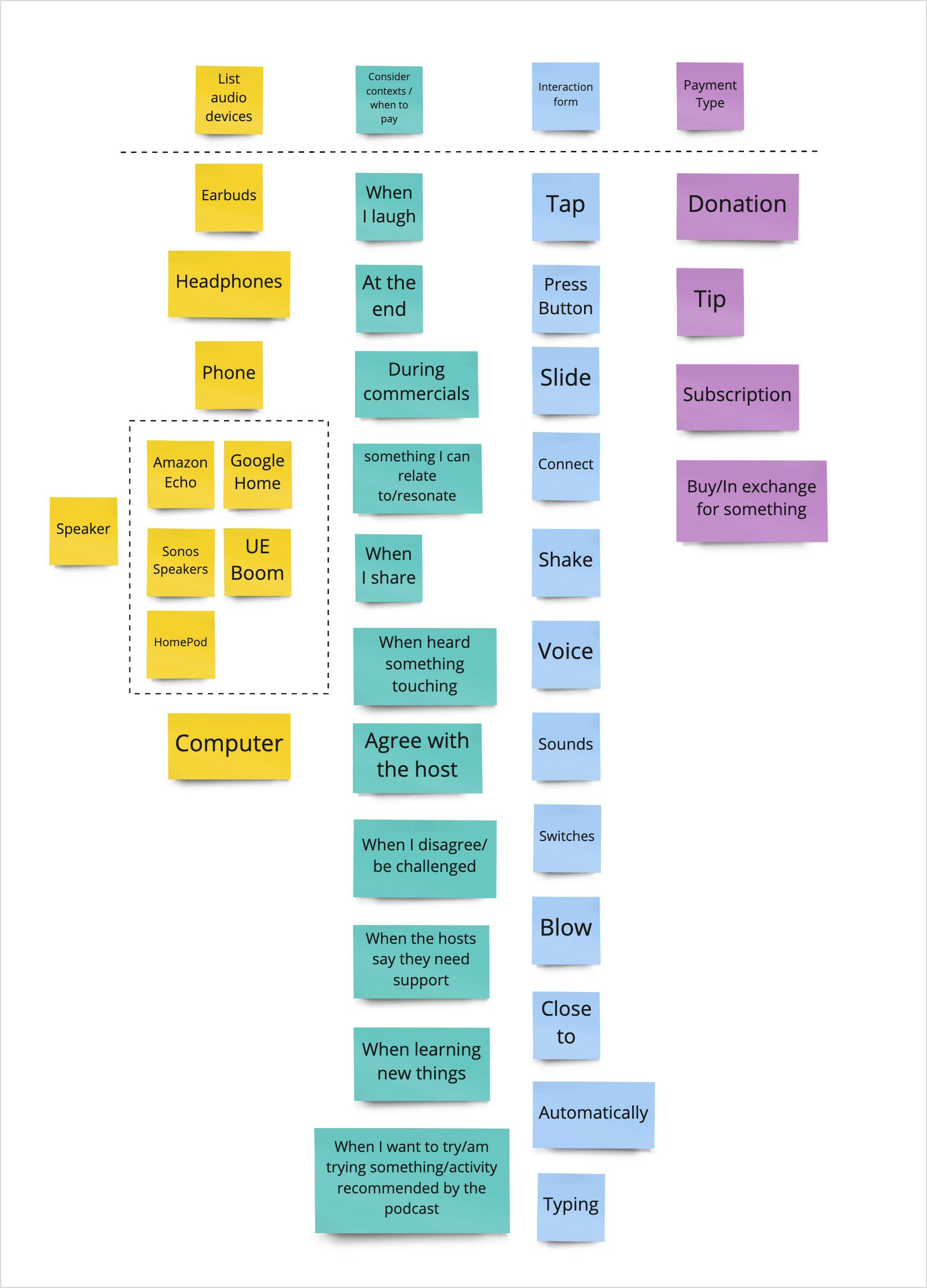
Ideation Deck – list examples under each category considered.
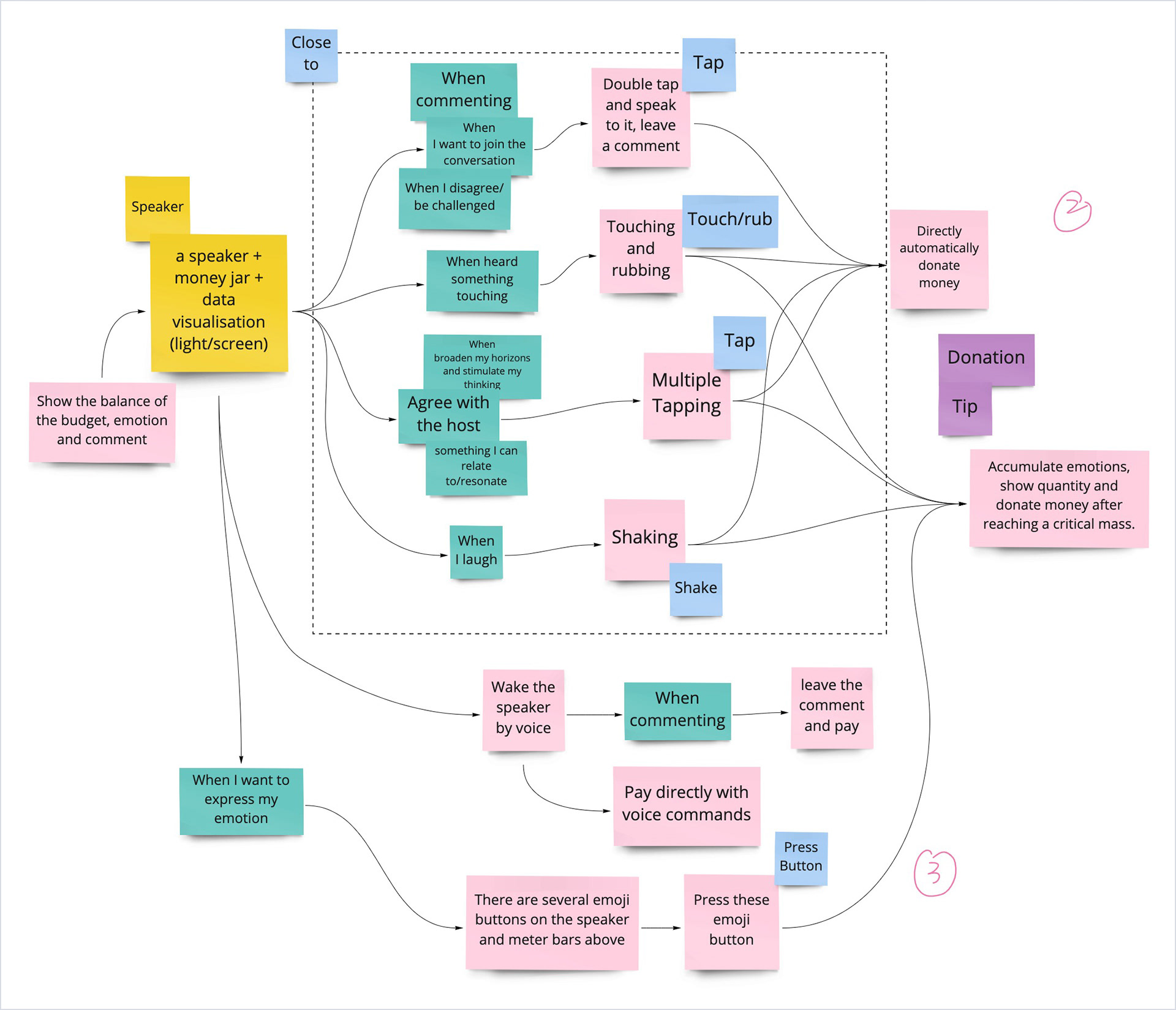
Ideation Deck – select examples and conceive design ideas.
Development – Ideation Deck
Making provotypes, in the form of ‘concept cards’ for user interviews.
A general question was used as a background to help the interviewer easily imagine these designs.
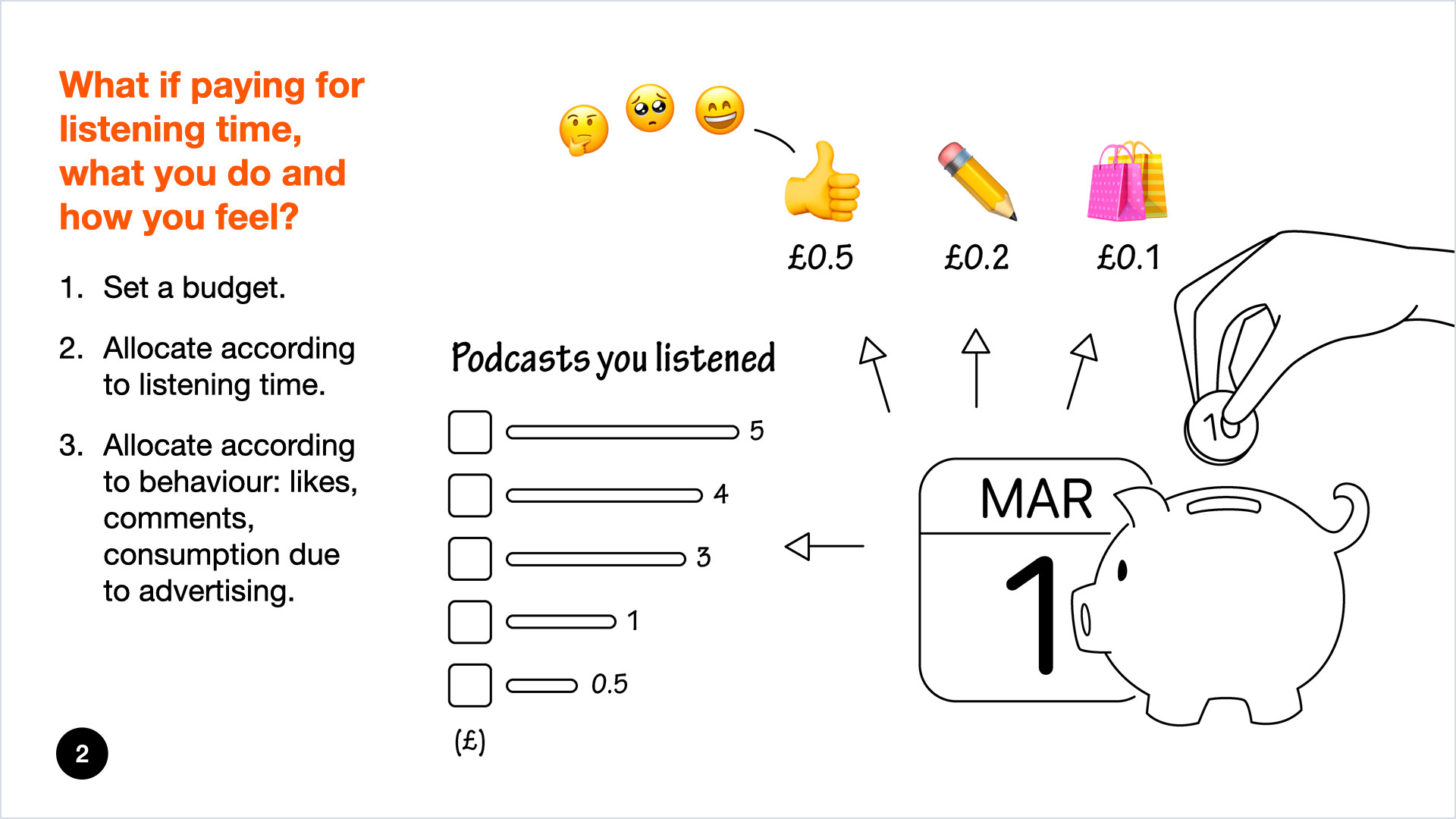

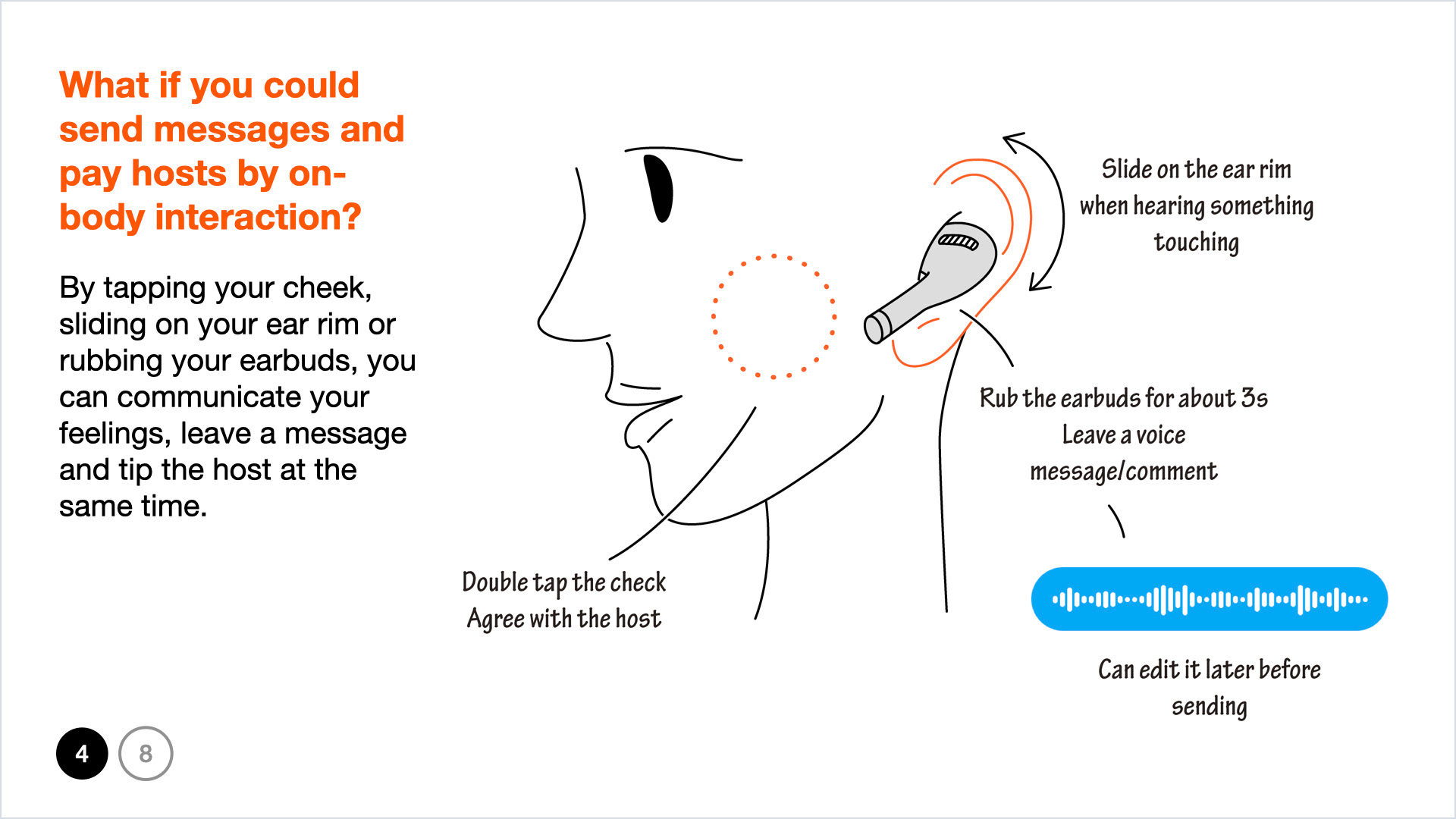
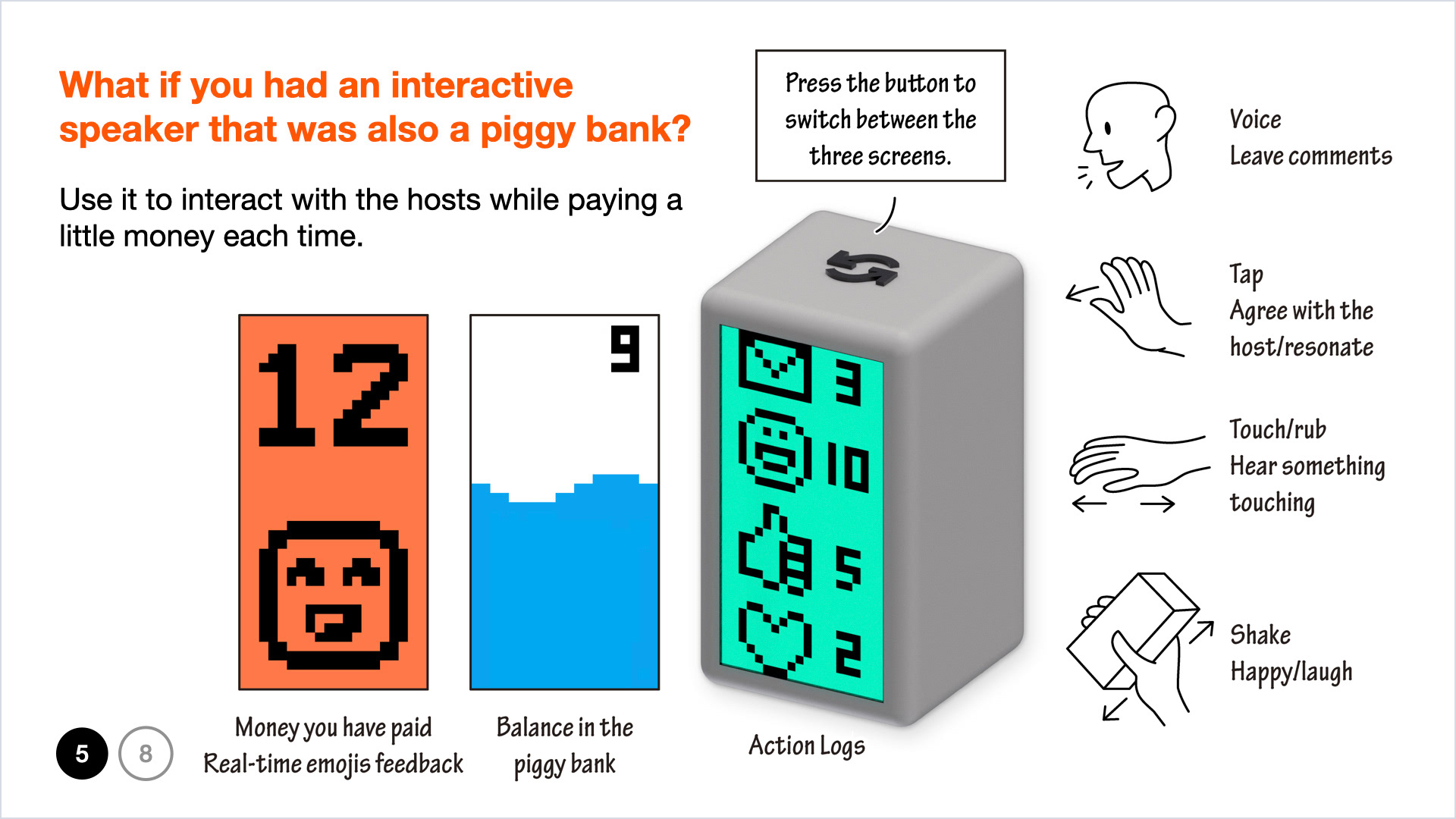
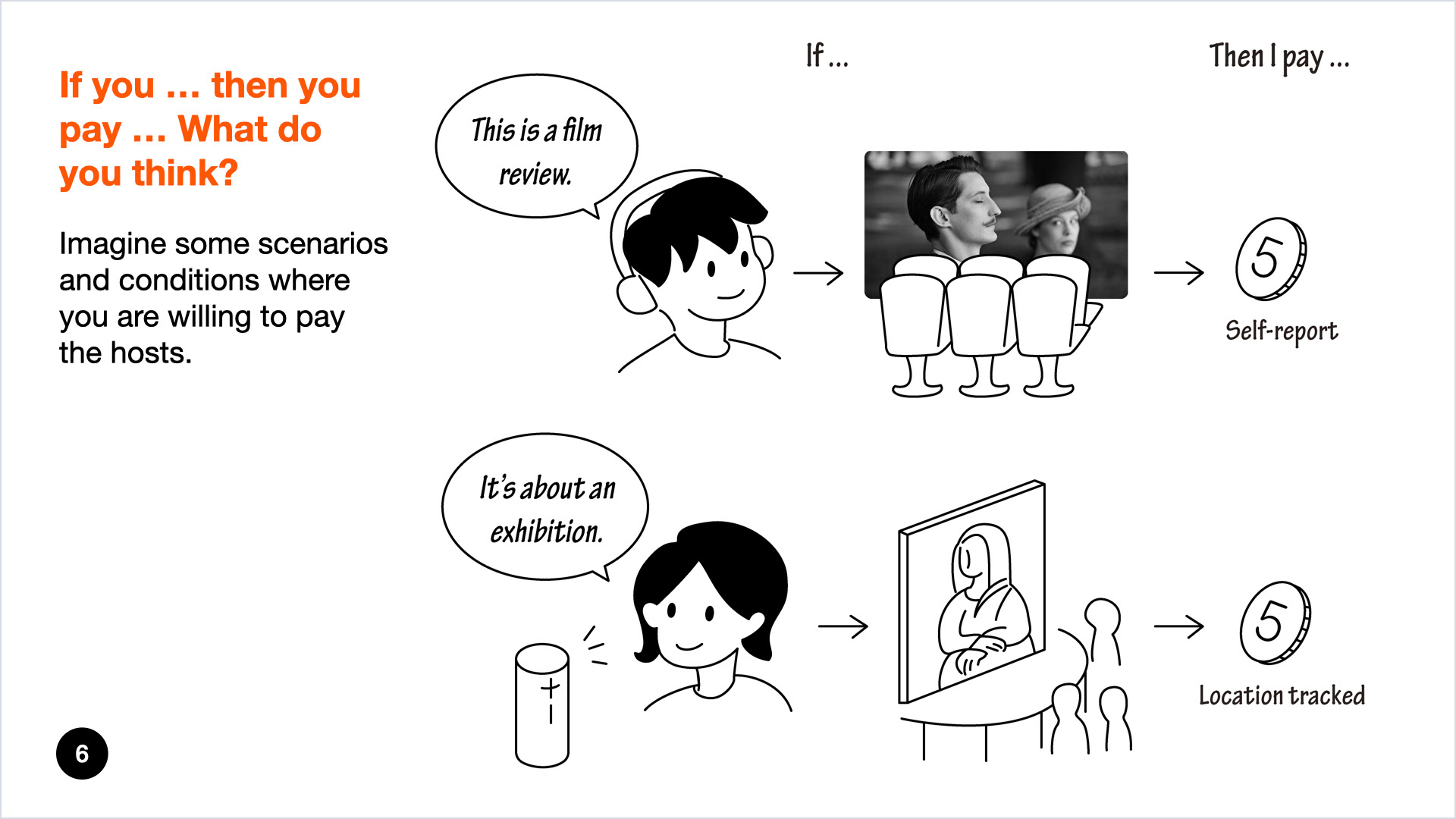
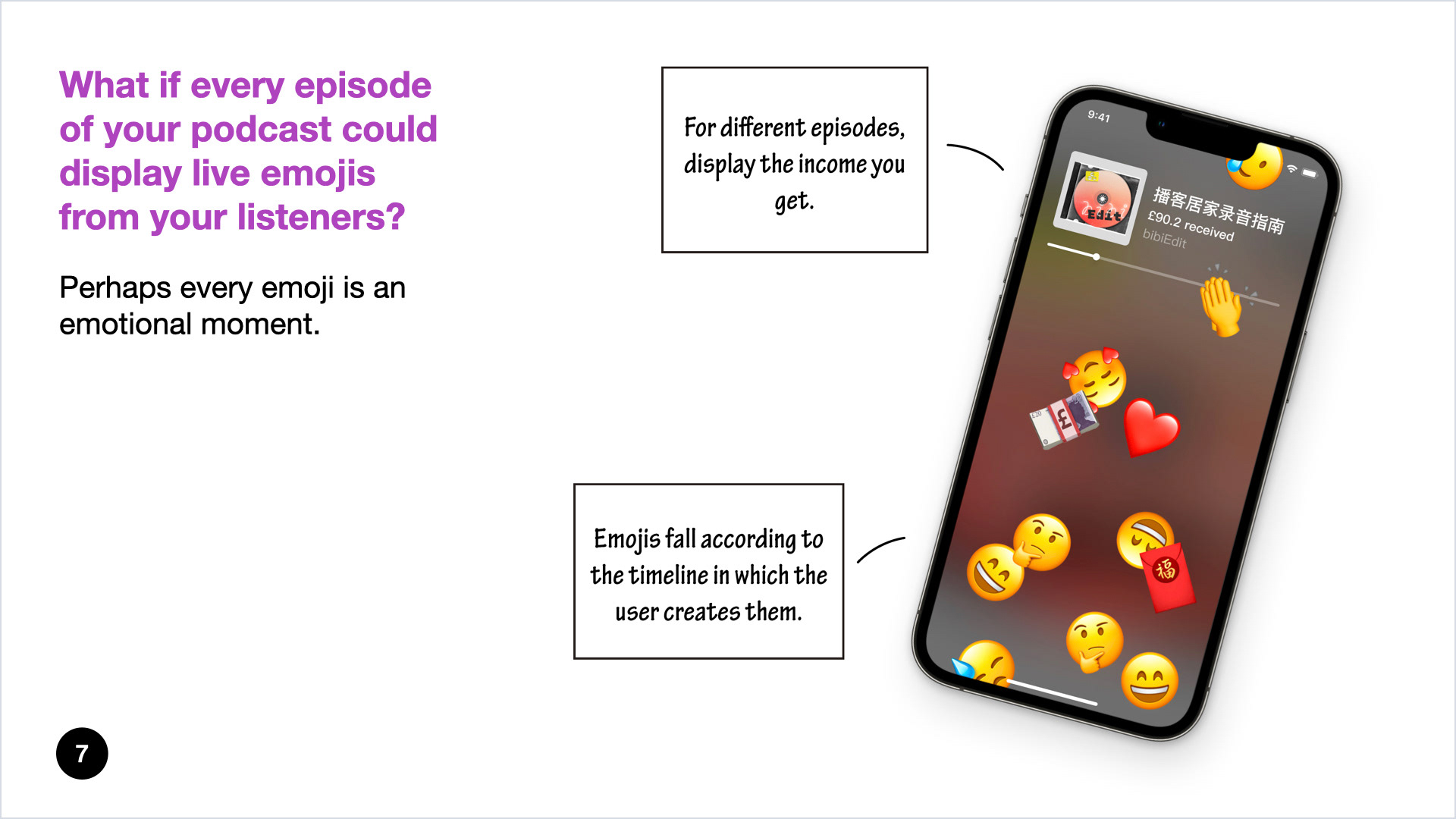
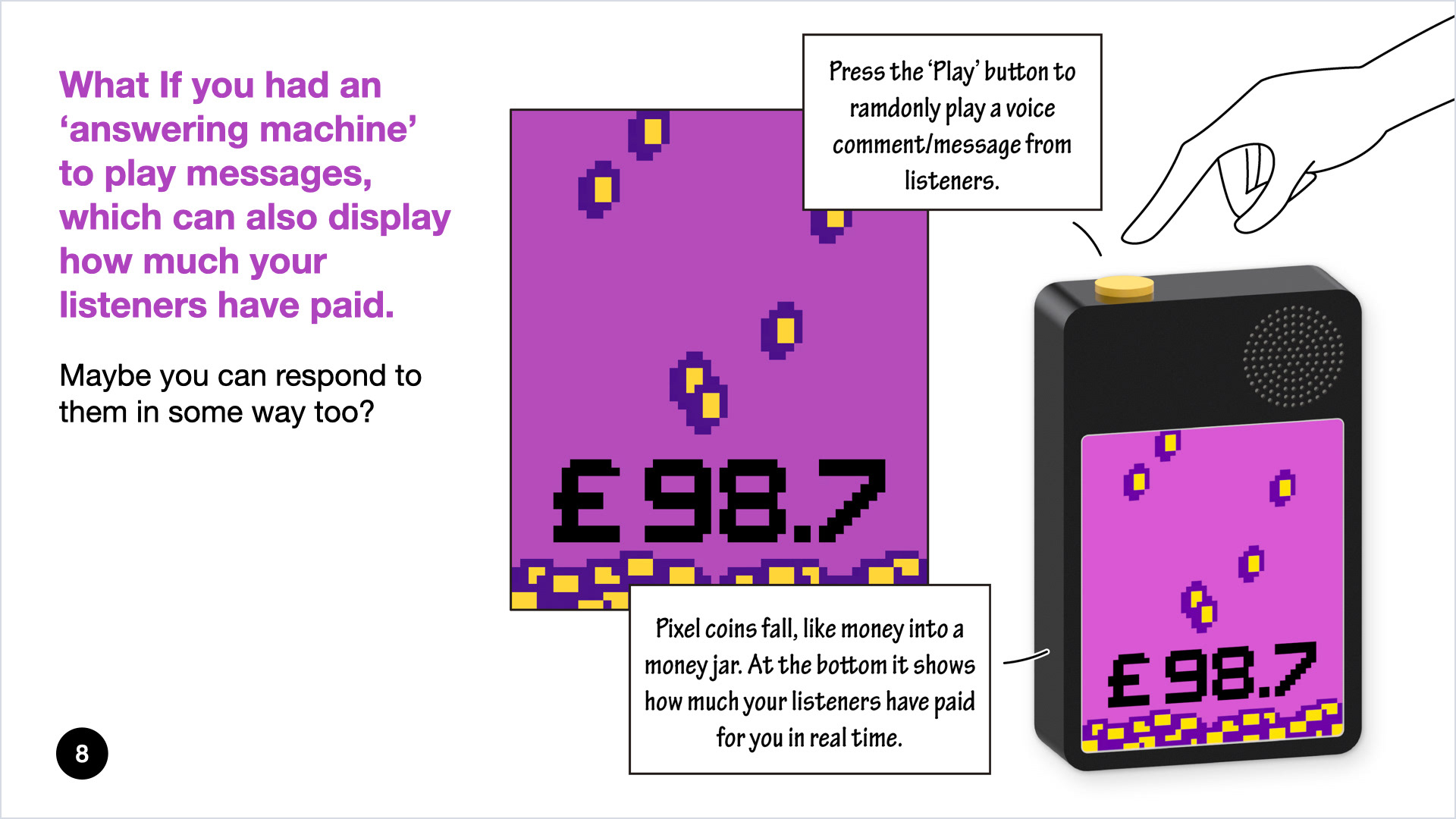
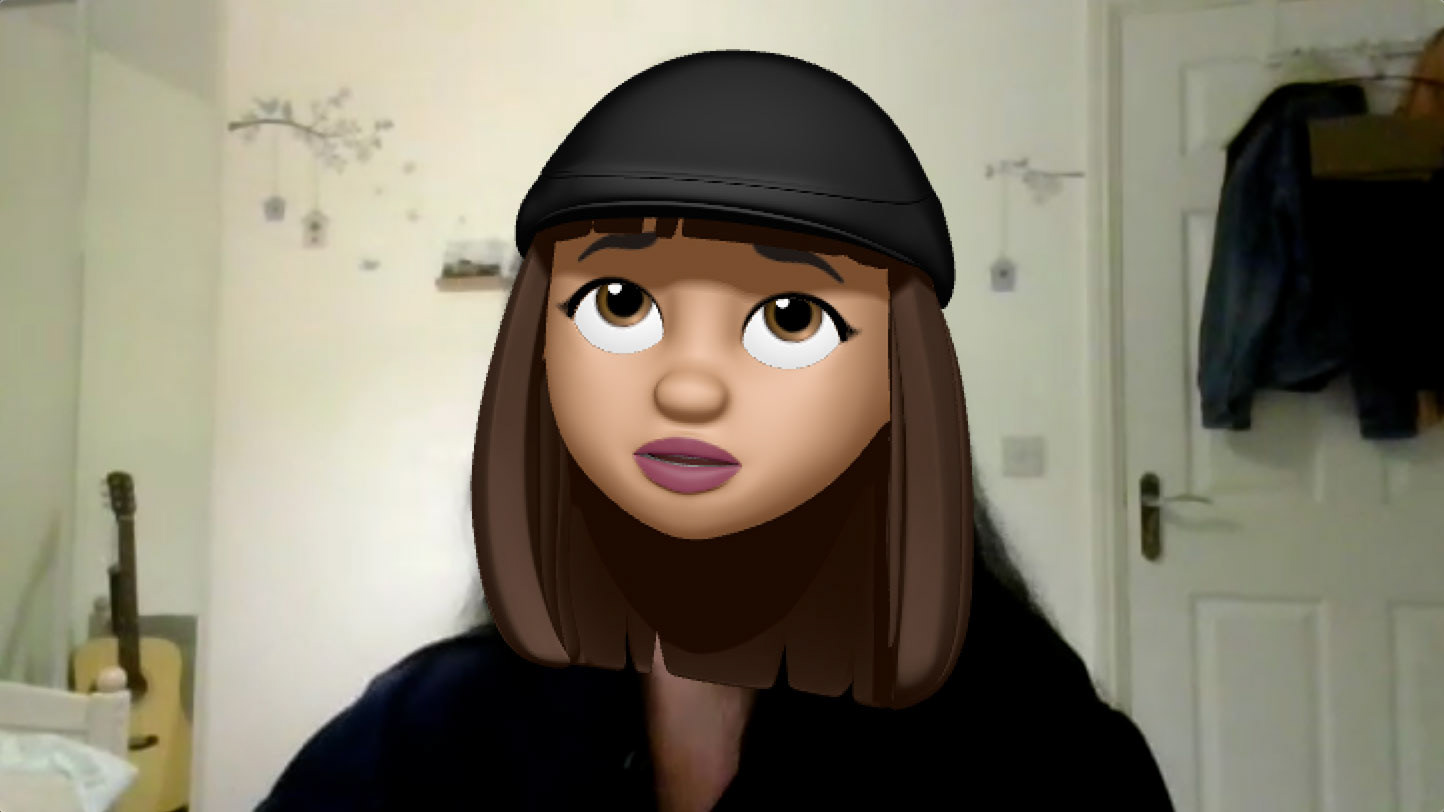
Participant A

Participant B
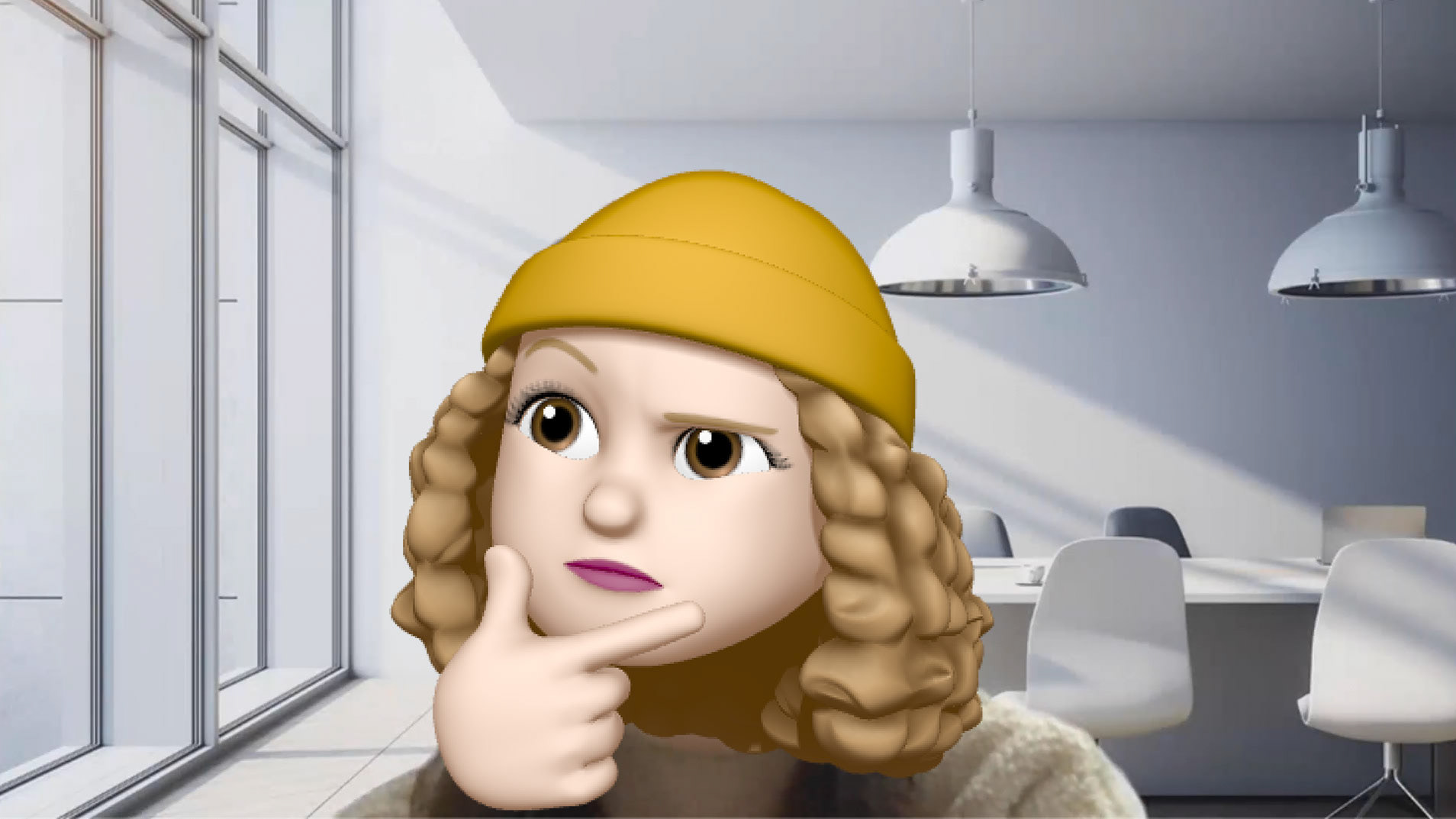
Participant C
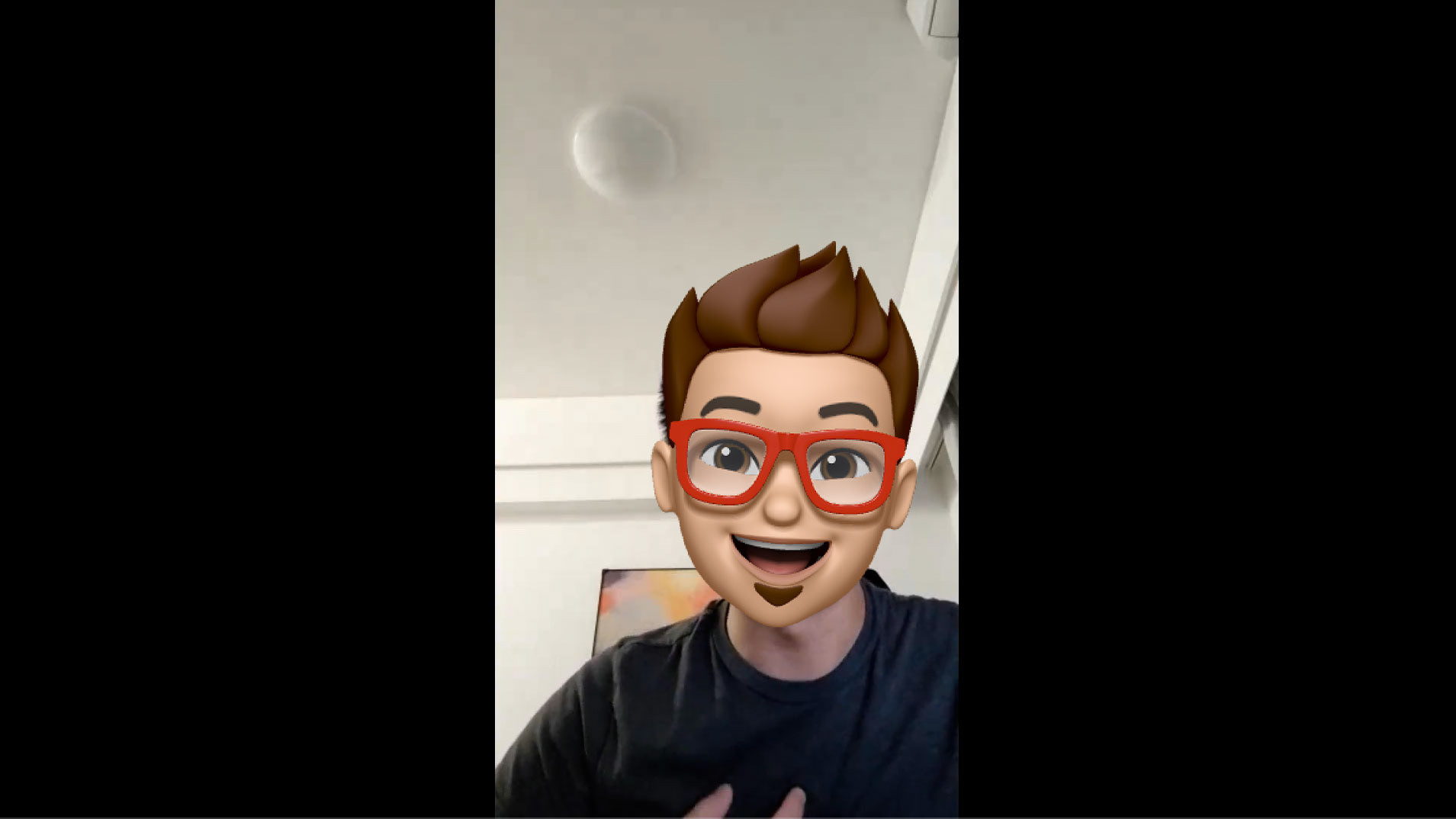
Participant D
Points of view selected from mini-biographies of participants.
The six podcast listening tools used by participants in the study differed in terms of type, notable features (focusing on interaction) and ways to help monetise podcasts.
Donation — out of love for the hosts and to support them in their continued creation. This mindset can easily develop into long-term support for the hosts, i.e. a ‘membership subscription’. While a ‘membership subscription’ gives listeners access to some exclusive content and benefits in return, participants felt they weren’t really that important.
Reward — out of love for a particular piece of content. Paying for the good takeaways from it.
2. Forms of interaction. Convenient and relaxed forms of interaction with a little bit of distance are most popular, such as emoji or text. Voice is considered too private and ineffective by most users.
3. Usage scenarios and habits. Interacting with headphones is the most popular. Users who frequently use their voice to interact with smart speakers do not consider using their hands to interact with the speaker to be in line with their usage habits.
4. Cost. This includes the money spent on buying new devices, as well as the time and effort spent learning to use them.
What can be used as a trigger for listeners to pay?
1. Length of listening: It doesn’t make sense, as the length of listening does not accurately reflect how much one likes or values the podcast.
2. Emotional moments. Most people are positive about this. But many also see paying as a decision that takes a while to make. For these participants, certain emotional moments can act as a trigger, but do not necessarily lead to paying. They believe that these emotional moments, recorded in some form, can slowly accumulate and turn into more powerful emotions: love or admiration for the hosts, guilt after enjoying a free show for a long time, or a valuable memory to look back on later. These will form the motivation for long-lasting loyalty and support for the anchor.
3. Concerns about the triggering methods. Firstly, paying by button is considered to be too simple and could lead to overpayment. Secondly, paying when pre-defined conditions are met by detecting locations or other data raises privacy concerns for some participants.
Seamless and painless experience
In terms of concrete practice, a top-up-and-pay option might reduce the obstacles in the payment process, but getting users to top up in advance may require additional motivation and the right timing.
The value of long-term records will eventually come
They may be active, including likes, comments, etc., or other more emotional feedback. They may also be passive, including the length of time spent listening, when they usually listen, etc. As an asynchronous, highly personal ‘slow medium’, these long-term records can lead to very deep reflections and interactions, and ultimately to long-lasting loyalty from listeners to the anchor.
Monies can be programmable but must be controllable
Listener-to-listener relationships
This idea may seem to contradict the idea that ‘podcasting is a highly personal medium that is often listened to in solitude’, but in fact the sense of engagement that some listeners want may be a sense of community, a feeling of being with people who share common interests, rather than a real interaction with other listeners. Thus, we could further interview listeners who are highly engaged in the podcast community — such as those who join the podcast’s social media groups — to gain more insight.
The creator-platform tension
Some participants discuss the design by considering whether these features need to be based on a particular platform. Indeed, features such as commenting, leaving messages to the host, and quickly rewarding them, seem difficult to implement completely off a platform. The possibility of relying on blockchain and other decentralised technologies to provide these services is a direction worth investigating and exploring.

